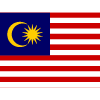Walk down the street in Jalan Petaling Jaya Selatan at dusk and you will hear the melodious call to prayer (azan) from a mosque, echoing next to the ringing of ritual bells from a nearby heavily-ornamented Hindu temple. Just across the road, the scent of incense drifts out from a Buddhist temple, standing not far from a white church.
This is not the only street where a scene like this exists as it has been a regular sight in Malaysia for decades. In fact, since 1963, Penang’s George Town has long taken pride in its “Street of Harmony” where it homes nine different houses of worship of different religions, all within walking distance. There are three more such sites across Penang, carrying the same spirit of coexistence.
This is nothing unusual, yet when described, it becomes something of a frenzy. This seeming collective cognitive dissonance is indeed something bizarre—although it, too, is not something that rarely happens. One cannot help but pause and wonder: what is on the minds of those who live in this society of diverse faiths, where almost every faith group’s core belief differs from each other?
Historically, living in diversity has always been part of our story. It is not just about tolerating one another, but also about embracing one another according to the teachings and values our respective religions espouse.
In Islam, for example, the belief is that every human being is God’s creation, and that diversity is not a coincidence but part of God’s purposeful design. The Quran (49:13) says: “O mankind, We (God) have created you from a single man and a single woman, and made you into races and tribes so that you should recognise one another. In God’s sight, the most honoured of you are the ones most mindful of Him: God is All-Knowing, All-Aware.”
Diversity, therefore, is a divine creative principle imbued in the fabric of human existence, meant to be acknowledged and embraced in our daily interactions.
For Malaysians, diversity and peaceful coexistence are treasures placed within our small but colourful nation. These two principles are also central to communities of other faiths.
The Hindu communities reflect this spirit through their principle of Vasudhaiva Kutumbakam, which means “the world is one family”, as taught in the Maha Upanishad. This principle has long shaped how they understand coexistence. Treating people of other faiths as their own relatives is how this principle is put into practice. We see it, for example, in how Indian mothers care for children of other races as if they were their own.
But just as what siblings in a family normally do, we laugh, we cry, we argue, and, yes, sometimes we bicker bitterly: “Wallawei, this akak didn’t give her signal wey!” or “Hey anney, put more chutney–lah, why so stingy!” These everyday “quarrels” may sound like they could amount to something serious, but isn’t that exactly how siblings behave with one another? These are in fact signs of closeness and belonging, things we Malaysians often take for granted.
Chinese philosophy also contributes to this harmony through Confucian values of “仁” (rén, humaneness) and “和” (hé, harmony). Rén reflects empathy and kindness, while hé is about creating and maintaining balance so that different communities can live together with respect. It is an ethical reminder that genuine peace is only attained when we choose to treat one another with dignity.
Similarly, in Buddhism, the principle of karuṇā (universal compassion) teaches that all beings are interconnected in their seemingly separate journeys. This compassion extends not only to humans, but also to animals as well as inanimate objects. It is a call to live with kindness, recognising that we all share the same world.
These are clear evidence that each community has, in its own way, woven the values of respect, compassion, and togetherness into Malaysia’s daily rhythm. Together, these voices form not a clash, but a harmony, like different instruments blending into one song.
We Malaysians have come a long way. We have learned to move from differences towards peace and from diversity towards unity, and we know that it cannot be built merely on slogans. Unity grows organically in the way we greet our neighbours during festive seasons, in the way we stand together against prejudice, and in the way we teach our children the values of respect and kindness, while preserving one’s own faith and cultural identity.
So, the next time you pass by a street where a mosque, a temple, and a church stand together, pause for a moment. See it not just as a familiar sight, but as a reminder of who we are: Malaysians. Different, yet united. Tested, yet resilient. And above all, committed to peace.

